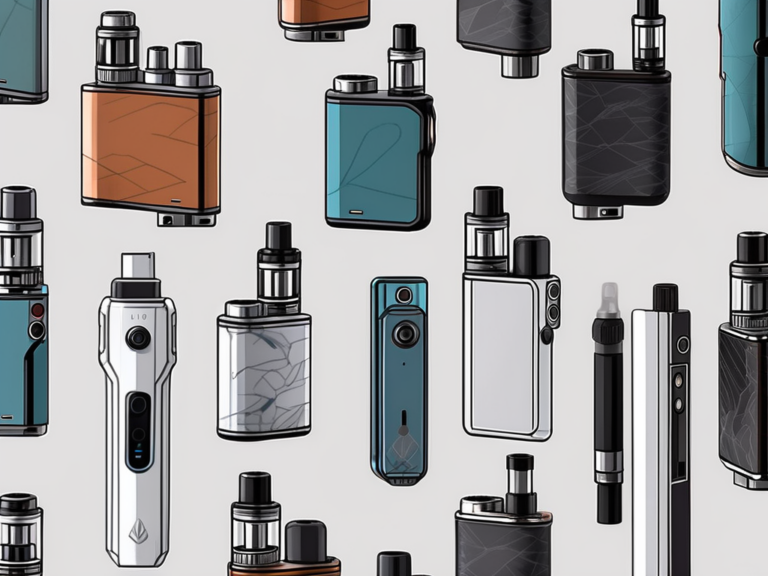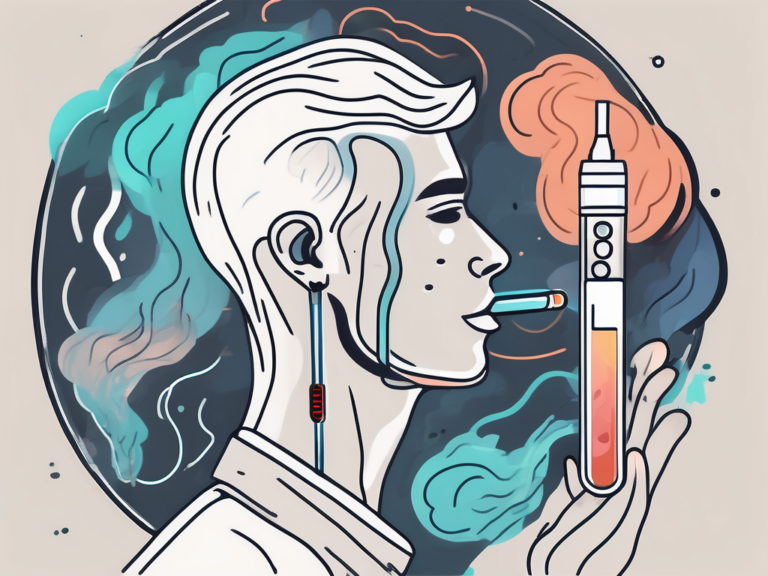how long does it take for vapes to kill your lungs
Vaping has become a popular trend in recent years, especially among the younger generation. However, there is growing concern about the impact of vaping on lung health. Many people wonder how long it takes for vapes to kill your lungs. In this article, we will delve into the subject and explore the different aspects of this issue.
Understanding the Impact of Vaping on Lung Health
Vaping involves inhaling and exhaling aerosol, often referred to as vapor, which is produced by an e-cigarette or similar device. While vaping may seem like a safer alternative to traditional smoking, it does not come without its risks. The chemicals present in e-cigarette liquids and the act of inhaling the vapor can have detrimental effects on the lungs.
The Anatomy of the Lungs and How Vaping Affects It
To comprehend how vaping affects our lungs, it is crucial to understand the anatomy of this vital organ. The lungs consist of bronchial tubes, air sacs, and blood vessels. When we inhale, the bronchial tubes carry the air into the air sacs, where oxygen is transferred to the bloodstream. The inhaled air then gets exhaled, removing waste gases like carbon dioxide.
However, vaping introduces foreign substances into the delicate lung tissues. The inhalation of these substances can cause irritation, inflammation, and damage to the bronchial tubes and air sacs. Over time, this can lead to decreased lung function and potentially more severe health issues.
Moreover, it is important to note that the lungs are not just passive organs that simply facilitate the exchange of gases. They also play a critical role in our immune system. The lungs have specialized cells, called alveolar macrophages, which help to defend against harmful pathogens and particles. However, vaping can impair the function of these cells, compromising the lung’s ability to fight off infections and maintain a healthy respiratory system.
The Chemicals in Vapes and Their Effects on the Lungs
Vape liquids, also known as e-liquids or vape juices, contain various chemicals, including nicotine, flavorings, and other additives. While nicotine is highly addictive, it is the other chemicals that contribute to the potential harm to the lungs.
Studies have shown that many of the flavorings used in vape liquids, such as diacetyl, can cause a condition known as popcorn lung. This condition is characterized by inflammation and scarring of the small airways in the lungs. Additionally, when heated, some chemicals present in e-liquids can transform into toxic substances that can cause further damage to the lungs.
Furthermore, the act of vaping itself can have negative effects on lung health. The process of inhaling and exhaling the vapor can lead to the deposition of particulate matter in the lungs. These particles can irritate the lung tissues and trigger an inflammatory response, contributing to respiratory symptoms and potential long-term damage.
In conclusion, while vaping may initially appear to be a harmless activity, it is essential to recognize the potential risks it poses to lung health. Understanding the anatomy of the lungs and the effects of vaping on this vital organ can help individuals make informed decisions about their respiratory well-being. It is crucial to prioritize lung health and seek alternatives to vaping that do not compromise the delicate balance of our respiratory system.
The Timeline of Lung Damage from Vaping
The effects of vaping on lung health can occur over different timelines. Some impacts might be immediate, while others may take time to develop. Let’s explore the short-term and long-term effects of vaping on the lungs.
Short-term Effects of Vaping on the Lungs
Immediately after vaping, individuals may experience symptoms such as coughing, throat irritation, and shortness of breath. These symptoms are often temporary and subside once vaping is ceased or reduced. However, in some cases, more severe symptoms, like chest pain and difficulty breathing, can arise and should not be ignored.
It is important to remember that short-term effects are not always indicative of long-term lung damage. Nonetheless, they serve as warning signs that suggest a need to evaluate vaping habits and potentially reconsider the continuation of this practice.
Long-term Effects of Vaping on the Lungs
Long-term vaping has the potential to cause significant damage to the lungs. Chronic inflammation and irritation of the lung tissues can lead to the development of respiratory conditions, such as bronchitis and even chronic obstructive pulmonary disease (COPD).
In some cases, long-term vaping has been associated with the occurrence of severe lung injuries, known as vaping-associated lung injury (VALI) or electronic-cigarette or vaping product use-associated lung injury (EVALI). These lung injuries can be life-threatening and may require hospitalization or even mechanical ventilation.
It is essential to approach vaping with caution, understanding that the long-term consequences can be severe and potentially irreversible.
Comparing Vaping to Traditional Smoking
When discussing the impact of vaping on lung health, it is worth comparing it to traditional smoking. While vaping is often considered a less harmful alternative, there are still notable differences and similarities in terms of lung damage.
Differences in Lung Damage from Vaping and Smoking
Traditional smoking involves inhaling tobacco smoke, which contains numerous harmful chemicals. Compared to smoking, vaping eliminates the combustion process, reducing the intake of harmful substances like tar and carbon monoxide. As a result, vaping may have a lower risk of certain respiratory conditions commonly associated with smoking.
However, this does not imply that vaping is completely safe. As discussed earlier, vaping introduces its own set of chemicals that can cause lung irritation and damage. Furthermore, the long-term effects of vaping, especially when practiced over an extended period, are still being studied, and the cumulative impact on lung health remains a concern.
Similarities in Lung Damage from Vaping and Smoking
Both vaping and traditional smoking share similarities in terms of lung damage. The irritation caused by vaping can lead to the development of bronchitis, inflammation of the air passages in the lungs. Similarly, smoking tobacco can result in chronic bronchitis, along with other respiratory conditions like emphysema and lung cancer.
While vaping may present a lower risk for certain respiratory conditions, it does not eliminate the potential harm to the lungs altogether. It is essential to acknowledge the shared risks and make informed choices regarding our respiratory health.
Prevention and Recovery from Vaping-Induced Lung Damage
Preventing lung damage from vaping is the best approach, and quitting vaping altogether is the most effective way to protect your lung health. Here are some steps you can take:
Steps to Prevent Lung Damage from Vaping
1. Education and Awareness: Stay informed about the potential risks and consequences of vaping on lung health. Understanding the risks can help motivate you to make healthier choices.
2. Seek Support: If you are trying to quit vaping or reduce your usage, seek support from friends, family, or professional cessation programs. Having a support system in place can significantly increase your chances of success.
3. Find Alternative Coping Mechanisms: Many people turn to vaping as a stress-relief or coping mechanism. Explore healthier alternatives like exercise, hobbies, or talking to a mental health professional to manage stress and emotions.
How to Recover from Vaping-Induced Lung Damage
If you have already experienced lung damage due to vaping, taking steps to aid your recovery is crucial:
1. Consult a Medical Professional: Seek medical advice from a healthcare provider experienced in treating lung conditions. They can provide you with personalized guidance and treatment options based on your specific situation.
2. Stop Vaping: Quitting vaping is essential to prevent further damage and aid the recovery process. Your healthcare provider can provide resources and support to help you quit successfully.
3. Practice Healthy Habits: Ensure you maintain a healthy lifestyle by exercising regularly, eating a balanced diet, and avoiding exposure to second-hand smoke and other environmental pollutants.
The Role of Medical Research in Understanding Vaping’s Impact
Medical research plays a crucial role in advancing our understanding of the impact of vaping on lung health. Ongoing studies aim to uncover the long-term effects, identify specific chemicals of concern, and develop strategies for prevention and intervention.
Current Findings on Vaping and Lung Health
Current research suggests that vaping can indeed have detrimental effects on lung health. The short-term symptoms are well-documented, and recent studies have shed light on the potential long-term consequences.
It is important to note that research in this field is still developing. As we continue to gather data, it is essential to stay updated on the latest findings from reputable sources like medical journals and organizations dedicated to respiratory health.
Future Research Directions on Vaping and Lung Damage
The scientific community recognizes the need for further research to fully understand the impact of vaping on lung health. Future studies will delve deeper into the specific chemicals and their interactions with lung tissues, as well as the long-term effects of vaping over extended periods.
Ultimately, this research will inform public health policies, help healthcare professionals develop better treatment strategies, and educate individuals about the risks associated with vaping.
In conclusion, the impact of vaping on lung health is a matter of growing concern. While it may take varying amounts of time for vapes to cause severe lung damage, the risks exist. Short-term symptoms like coughing and irritation serve as warnings, while long-term vaping can lead to chronic respiratory conditions and even life-threatening lung injuries. Understanding the differences and similarities between vaping and smoking is crucial in making informed decisions about our respiratory health. Prevention and recovery from vaping-induced lung damage involve quitting vaping altogether and seeking professional support. Medical research continues to play a vital role in unraveling the intricate relationship between vaping and lung health. By staying informed and prioritizing our well-being, we can take steps to protect our lungs and promote a healthier future.






